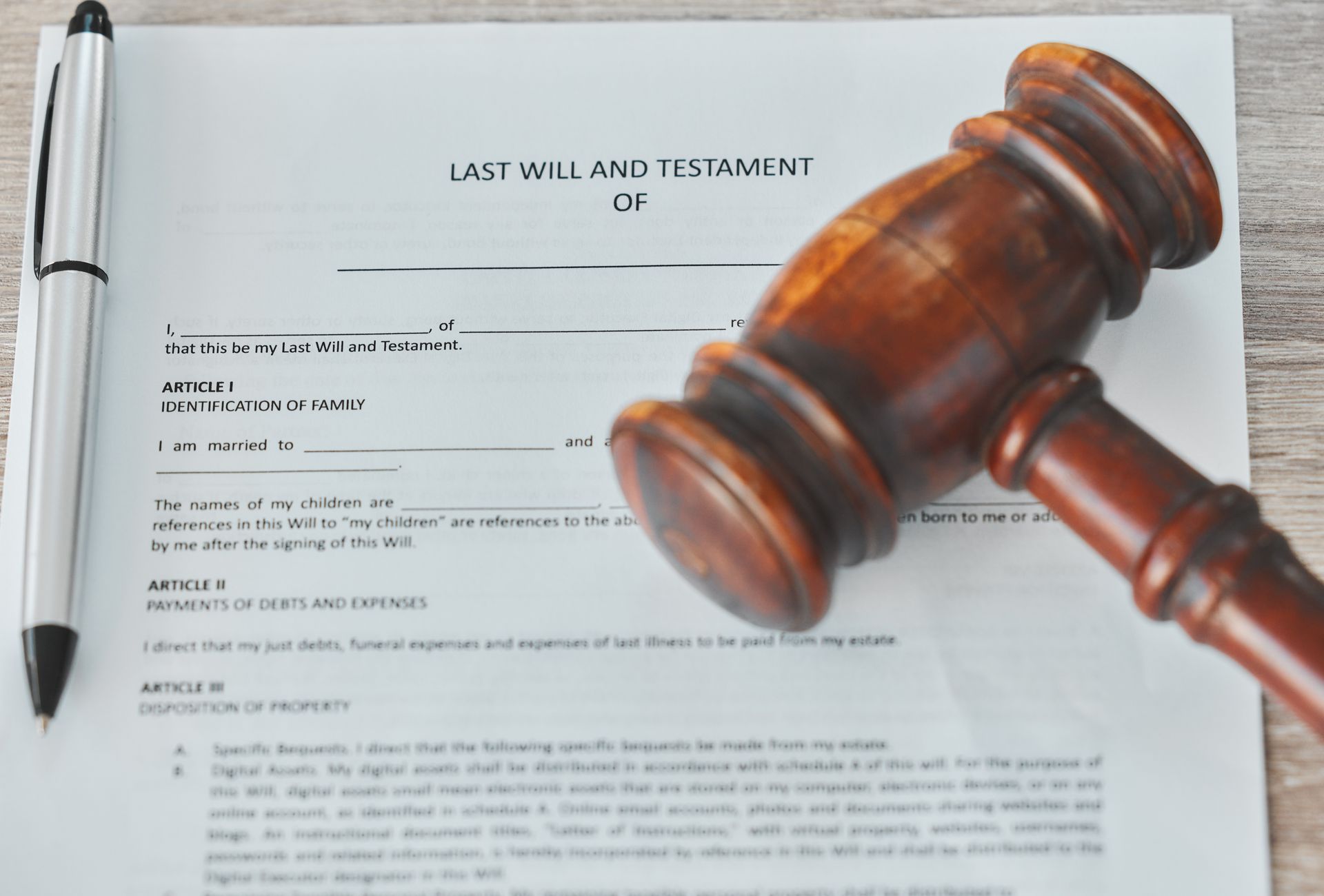Probate Process
What Is Probate & Why Does It Matter?
Probate is the legal process for transferring property after someone passes away. If the person had assets—like a home, bank accounts, or personal belongings—those assets make up what’s called the estate. Depending on what the estate includes, you may need to go to court (commonly called “going through probate”) or use other methods to transfer ownership.
Who Manages the Estate?
If there’s a will, it needs to be delivered to the court. A personal representative (often called an executor) is then appointed to handle the estate. Their job? Collect the property, pay off any debts, and distribute what’s left to the heirs or beneficiaries. If the person didn’t leave a will, a close relative is typically chosen to manage this process.


Who Manages the Estate?
If there’s a will, it needs to be delivered to the court. A personal representative (often called an executor) is then appointed to handle the estate. Their job? Collect the property, pay off any debts, and distribute what’s left to the heirs or beneficiaries. If the person didn’t leave a will, a close relative is typically chosen to manage this process.

Understanding Probate & Legal Terms
The probate court doesn’t just handle estates—it also oversees cases like guardianships and conservatorships. Since legal terms pop up often during probate, understanding key definitions like “decedent” (the person who died) or “intestate succession” (who inherits if there’s no will) is helpful.
Does the Estate Need Probate?
Figuring out if the estate needs to go through probate is one of the first steps. In some cases, you can avoid court entirely depending on how the property is titled or the total value of the estate. If probate is necessary, a judge will prioritize who gets to be the personal representative, starting with anyone named in the will or close relatives.


Does the Estate Need Probate?
Figuring out if the estate needs to go through probate is one of the first steps. In some cases, you can avoid court entirely depending on how the property is titled or the total value of the estate. If probate is necessary, a judge will prioritize who gets to be the personal representative, starting with anyone named in the will or close relatives.
Probate can seem complicated, but with the right information and guidance, you can navigate it more easily. Learn more by exploring the California Courts Probate Overview.
Navigate Probate with Confidence
Probate can be complex, but the right guidance makes it easier. Learn how to manage the process smoothly.
The 3 Key Stages of Probate
1. Opening a Probate Case
When someone passes away, their estate may need to go through probate—a legal process to settle debts and distribute assets. If you’re starting this process, you’ll be known as the petitioner, and the first step is filing the necessary forms with the court.
File the Petition
You’ll need to submit a Petition for Probate (Form DE-111) along with other required documents to officially open the case. File this in the county where the person who passed away (the decedent) lived. If the decedent lived outside of California but owned property in the state, file in the county where the property is located.
Paying the Filing Fee
You must either pay a filing fee (typically $435) or apply for a fee waiver if you’re facing financial hardship. These costs can usually be reimbursed from the estate.
Receiving a Court Date
Once filed, the probate clerk will stamp the forms and give you a court date and department number. At the hearing, the judge will decide who to appoint as the personal representative of the estate.
Notifying Interested Parties
You must notify family members and anyone entitled to a share of the estate about the court hearing. This involves:
- Mailing the notice through another adult who is not part of the case.
- Publishing a notice in a local newspaper (you can later reimburse this cost from the estate).
Attending the Court Date
The court will review the petition, notice, and publication details. If no issues arise, the judge will appoint the personal representative (also known as the executor or administrator) to manage the estate.
2. Administering the Estate
Once appointed, the personal representative will take charge of managing the estate’s assets and settling any debts. This is a crucial phase with several key responsibilities:
Inventory and Appraisal
The personal representative gathers and documents all assets, including property, accounts, and personal belongings. They’ll file an Inventory and Appraisal (Form DE-160) and work with a probate referee to value non-cash assets.
Notice to Creditors
The representative must notify creditors by sending a Notice of Administration to Creditors (Form DE-157). If the estate has sufficient funds, debts will be paid directly from the estate.
Handling Taxes
A final personal income tax return is filed for the decedent. If the estate generates income, such as through property sales or investments, the personal representative will also file an estate tax return.
Reports to the Court
The representative submits a report detailing how the estate was managed. Courts typically require this report one year after the representative is appointed, with a scheduled hearing for the judge to review the progress. If more time is needed, the court may extend the administration period.
3. Closing the Estate
Once all assets have been collected, debts paid, and tax obligations settled, the personal representative can move toward closing the estate.
Final Report and Account
The personal representative files a final report, final account, and petition for final distribution of the remaining assets. If all beneficiaries agree, they can waive the need for a detailed final account.
Notice of the Hearing
An adult who is not a party to the case must notify interested parties about the hearing for final distribution.
Court Review and Approval
At the hearing, the judge will review the case and, if satisfied, approve the distribution of assets to the beneficiaries.
Follow the Official California Courts Guide
This is a general guide based on California regulations, but every situation is unique. For a detailed overview, visit the California Courts | Probate Overview, or reach out to us for expert guidance tailored to your needs.


